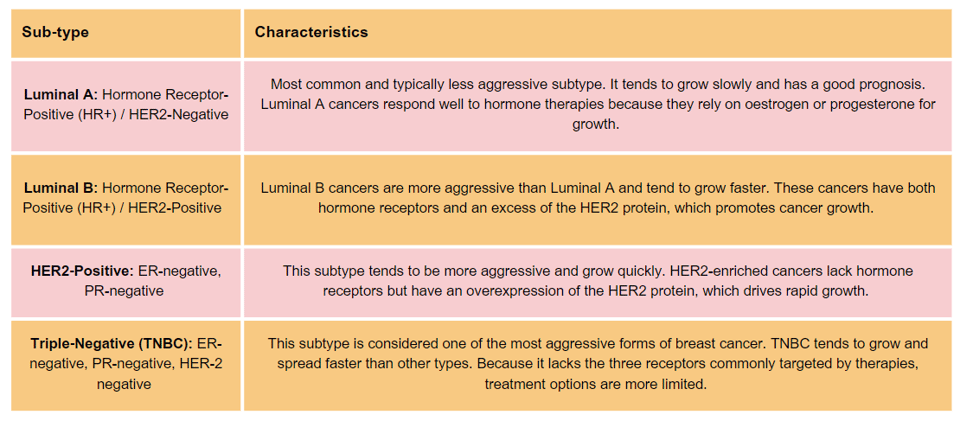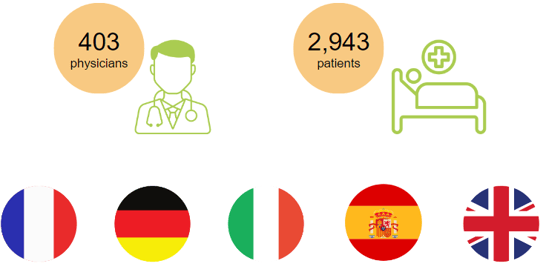Breast cancer buzz on the internet year 2023
Higher peaks during ASCO, ESMO and pink October. Although in 2023 pink October coincided with ESMO conference.

Source: Social Media Listening, n=3.55M mentions. Scope: worldwide in English. Period: January-December 2023
How are the demographics of Breast Cancer subtypes changing?
We are observing a shift in the proportions of patients according to their HER2 status potentially due to:
- An increased recognition of HER2-Low: Traditionally, breast cancers were classified simply as HER2+ or HER2-. However, advances in diagnostic techniques have identified a subset of HER2- cancers that express low levels of HER2 (HER2-low). This category is increasingly being recognized, which has changed the overall distribution of HER2 statuses in breast cancer. The identification of HER2-low has effectively decreased the proportion of what was previously categorized as purely HER2-. While these tumours do not qualify for standard HER2-targeted therapies, ongoing research is exploring new treatments for HER2-low cancers. As a result, the overall proportion of patients labelled as HER2+ or HER2- is shifting, with HER2-low now representing a significant portion of what used to be considered HER2-. According to data from APLUSA’s HER2+ mBC Syndicated Tracker (Q2-2024), most physicians can correctly identify HER2-Low based on its definition (IHC1+ / IHC 2+ ISH-).
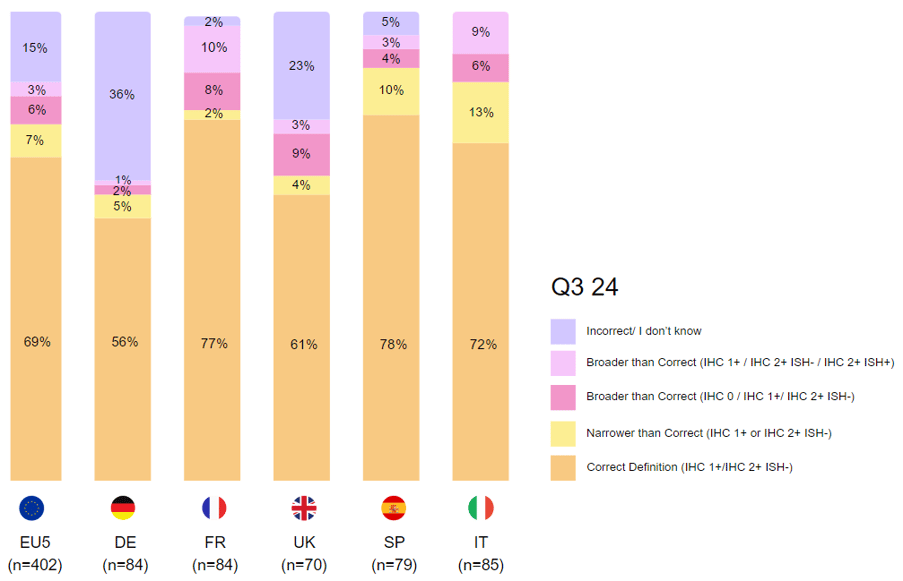
- Advances in diagnostics and treatments: Improved testing methods, including more sensitive assays, are better able to detect varying levels of HER2 expression. This refinement has led to a more nuanced understanding of HER2 expression across different patient populations. As therapies become more targeted, even patients with low levels of HER2 expression might receive HER2-directed treatments. This shift has encouraged re-evaluation and reclassification of HER2 status in some patients, contributing to changes in the reported proportions.
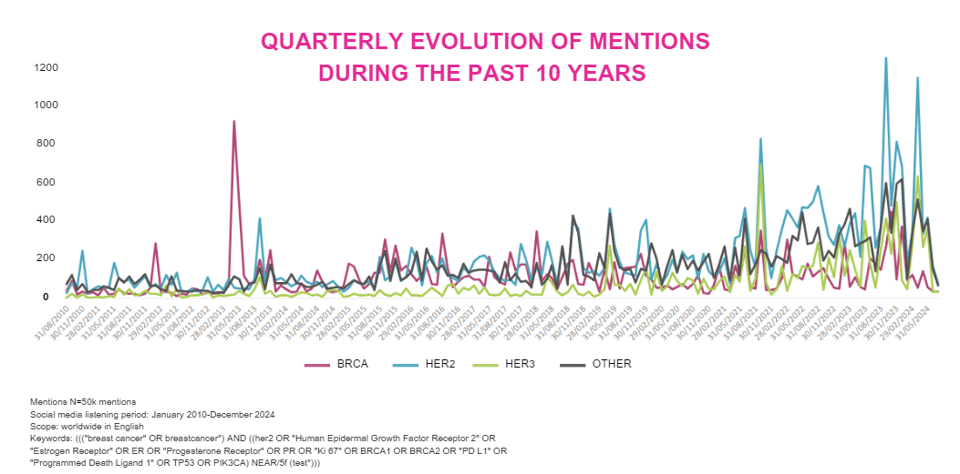
Other factors contributing to the shifting on the proportions of patients according to their HER2 status can be related to:
- Epidemiological and demographic changes such as race, age, and geographic location.
- Clinical trials and research that reclassify patients based on emerging HER2 categories (like HER2-low) also contribute to shifting proportions. These studies often lead to new guidelines and practices that redefine how physicians categorize and treat patients.
Treatments
The breast cancer treatment landscape is witnessing significant advances, with new therapies offering promising outcomes. Our latest market research delves into the emerging trends in personalized medicine, targeted therapies, and immunotherapy. By understanding these innovations and their market potential, oncology commercial teams can identify new opportunities and develop strategies to successfully position their products in a competitive market.
According to APLUSA’s recent HER2+ mBC Syndicated Tracker (Q2-2024), for second and third line therapies, patients predominantly receive mostly antibody-drug conjugates (ADCs) like trastuzumab deruxtecan or trastuzumab emtansine. In the third line, tyrosine kinase inhibitors (TKIs), primarily tucatinib, are also commonly administrated.
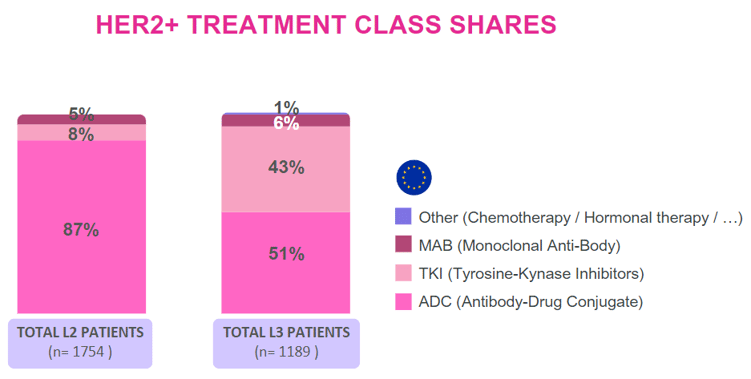
Clinical trials continue to explore novel approaches, and ongoing research aims to further understand the disease, identify new treatment targets, and improve survivorship and quality of life for patients.
Some HER2-targeted therapies for metastatic breast cancer (mBC) are currently under investigation:
- Bispecific antibodies: Zanidatamab (ZW25), Runimotamab (RG6194), Zenocutuzumab (MCLA-128) and KN026.
- Antibody Drug Conjugates (ADCs): Disitamab vedotin (RC48), Trastuzumab duocarmazine (SYD985) and BAT8001.
Who are the HER2-positive patients?
According to APLUSA’s recent HER2+ mBC Syndicated Tracker (Q2-2024), the majority of patients with HER2+ metastatic Breast Cancer who are currently receiving their 2nd or 3rd line of treatment are over 65 years old, in good physical condition and have a moderate disease burden. Additionally, 25% of these patients also manage diabetes and nearly as many suffer from respiratory conditions such as COPD or moderate to severe asthma. Furthermore, 20% of the patients are smokers. The cancer has primarily metastasised mostly to the lungs, bones and liver.
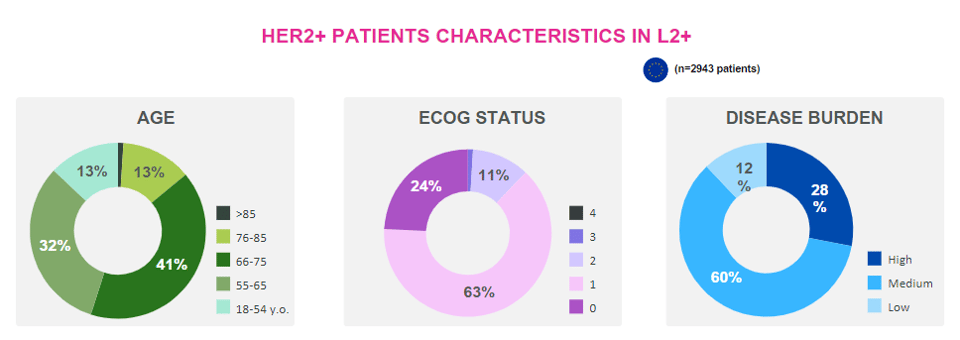
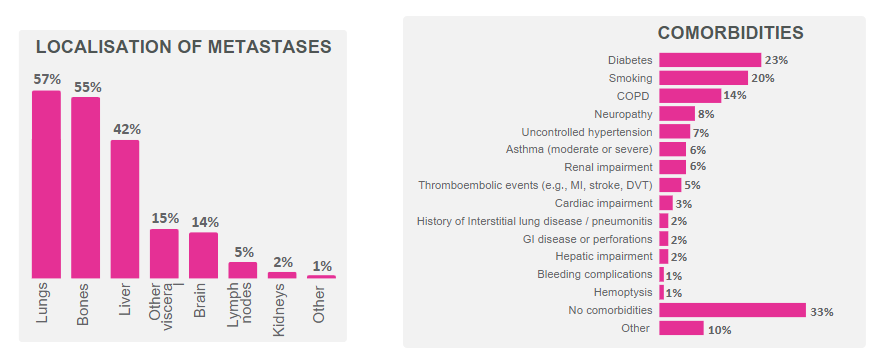
Sources:
(2) https://www.who.int/news-room/fact-sheets/detail/breast-cancer

